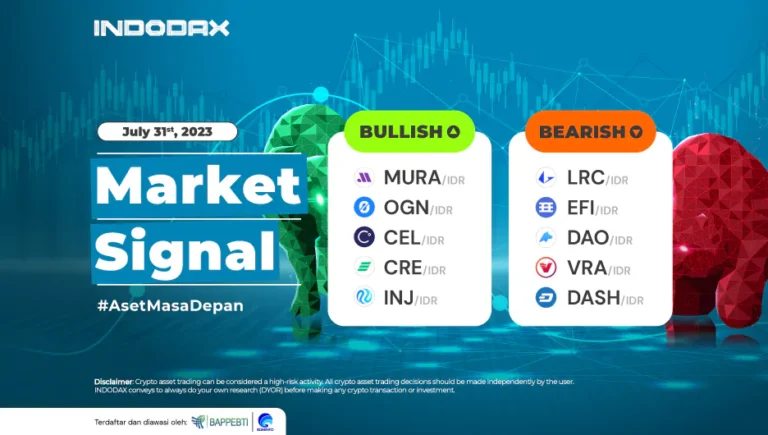Many methods need to be known in business, including calculating and analyzing costs, volume, and profit.
Related to this, the method commonly used is CVP or Cost-Volume-Profit.
CVP itself is also often referred to as the Break Even Point (BEP), which is a way to determine the effect of sales volume and costs on profit (profit).
Later, using the CVP method, a business can determine the number of products that must be sold to achieve a certain profit difference.
So, to better understand what CVP is, its function, purpose, and how to calculate it, let’s look at the following review.
What is CVP?

Cost-Volume-Profit or CVP is a method for determining changes in costs, both variable and fixed costs and sales volume that affect business profits.
For companies, CVP analysis is useful for determining the amount of production so that the results are optimal.
With this analysis, too, a company will be able to assess its overall business performance.
As mentioned at the beginning of this article, this can happen because this method will provide data on the number of products that need to be sold so that the company can obtain BEP or reach a certain profit margin (margin).
CVP Function
CVP has such an important function as a method commonly used in companies.
The CVP function compares production costs, sales volume, selling prices, and profits the company will achieve.
Thus, later the company can make the right decisions for managing its business.
Here are some other functions of the CVP that you need to know, including:
- CVP helps companies to get an overview regarding planning the amount (target) profit that will be obtained
- CVP allows companies to make decisions regarding the pricing of their products.
- CVP will provide an overview for companies regarding which products are the most profitable to produce.
CVP Goals
Not only functions, of course, CVP or Cost-Volume-Profit also has several specific goals.
It should be noted CVP itself has the main objective of helping company management to dig up information related to the correlation between costs, volume, and profit earned.
By looking at the relationship between the things above, the company can also make measurable decisions regarding the amount of production.
In addition, the following are several other objectives of the CVP, including:
- CVP allows companies to determine the cost difference in each production and sales process. If there is a change in production/sales volume, CVP can generate estimates regarding the profit to be achieved.
- This method also clearly describes information so sales can touch the desired profit target BEP point.
- By analyzing changes in variable and fixed costs, CVP also determines the amount of production so that the results are optimal.
CVP Components
After knowing a series of functions and their purpose, now is the time to see the components of the CVP.
Several different components make up the CVP.
The components are known to involve various calculations and ratios.
Here are some CVP components that you need to know, including:
1. Contribution Margin (CM) Ratio and Variable Cost Ratio
The Contribution Margin (CM) and variable cost ratios can significantly describe variable costs. Here is the formula:
CM Ratio = Contribution Margin / Sales
Variable Cost Ratio = Total Variable Cost: Sales
The high CM and low variable cost ratios show the low variable costs incurred.
2. Break Event Points (BP)
Meanwhile, the Break Even Point (BEP) or break-even point is the number of products that can be sold by the company so that all production costs are covered. The following is the BEP formula:
BEP = Total Fixed Costs: CM per Unit
3. Changes in Net Income
Companies can usually make related to the value of net income that varies in line with changes in sales.
In this case, the company can use sales/net profit targets to determine the effect of each.
To calculate the change in net profit, the following formula can be used, namely:
Total units = (Fixed Cost + Profit Target) : CM Ratio
4. Safety Margin
The company can also do the safety margin or margin of safety. The calculation is commonly called the company’s “move space.”
This is illustrated by the level of sales that fell but still touched the BEP point. Here is the formula:
Safety Margin = Actual Sales – Break-even sales
5. Degree of Operating Leverage (DOL).
The operating leverage level or Degree of Operating Leverage (DOL) is a component of The last CVP on this list.
DOL can be calculated using this formulation:
DOL = CM / Net Income
The DOL value is an important number because it provides information to the company regarding changes in net profit related to changes in sales value.
A high DOL number is proportional to a high risk. However, only some think a high DOL will be better for the company.
Formula and How to Calculate CVP
The formula and how to calculate CVP are also important things that a business company needs to know.
This is important because the results of the CVP calculation will later be needed in making company decisions.
Two methods can be used to calculate CVP: the equation and the contribution margin.
The following is the formula and how to calculate the CVP that you need to know, namely:
1. Equation method
In the equation method, the equation used is related to the income statement function of a company.
In calculating the CVP using the equation method, a quantity factor (the number of products that must be sold as a sales target first) is needed.
Thus, the company can meet its profit target. Below is the formula for calculating CVP using the equation method, namely:
Profit = Unit contribution margin x (Number of products sold – Fixed costs)
2. Contribution Margin
The contribution margin method is the next method that companies can use.
Contribution margin results from the difference obtained from total product sales and total variable costs.
In this case, the contribution margin must be greater than the total fixed costs for the business to profit.
In addition, this method can also be calculated for each product unit by calculating the remainder obtained from reducing the variable cost of each unit with the selling price for each unit.
The comparison (ratio) will be determined by dividing it by the number of sales.
This method is used to determine the BEP value of sales. The sales BEP value can be determined after dividing the total fixed costs by the contribution margin ratio.
The following is the formula for calculating CVP using the contribution margin method, namely:
Total sales BEP = Total fixed costs / Contribution margin ratio
On the other hand, to calculate the total product sales required, here is the formula:
Total product sales required = (Target profit + Fixed costs): Contribution margin of each unit
Conclusion
In conclusion, Cost-Volume-Profit or CVP is an analytical method to determine changes in costs, variable and fixed costs, and sales volume that affect business profits.
For companies, CVP analysis is useful for determining the amount of production so that the results are optimal.
The CVP function compares production costs, sales volume, selling prices, and profits the company will achieve.
It should be noted CVP itself has the main objective of helping company management to dig up information related to the correlation between costs, volume, and profit earned.
So, that was the complete discussion regarding the meaning, function, and CVP formula you need to know.
Furthermore, you can also read other interesting articles, such as What is GDP and Solvency at INDODAX Academy.








